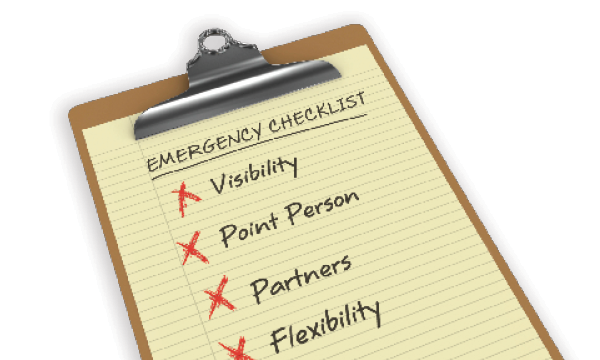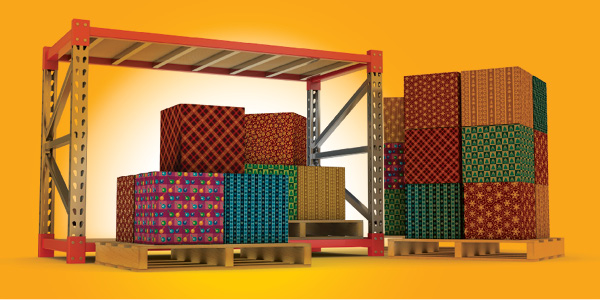
Why Supply Chains Need Business Intelligence
Companies that want to effectively manage their supply chain must invest in business intelligence (BI) software, according to a recent Aberdeen Group survey of supply chain professionals. Survey respondents reported the main issues that drive BI initiatives include increased global operations complexity; lack of visibility into the supply chain; a need to improve top-line revenue; […]
Read More
Inventory Tracking: Crunching the Numbers
With store replenishment lagging behind sales growth, potato chip maker Golden Flake deployed a mobile inventory-tracking solution to satisfy its craving for stock visibility.
Read More
How to Select a Returns Management Partner
As retailers turn over stones looking for ways to reduce costs, eliminate waste, become greener, and raise the bottom line, returns management is an area ripe for picking. What was once written off as a lost cost has now become a can’t-miss opportunity—and for good reason. In 2011, U.S. consumers returned more than eight percent […]
Read More
How to Measure Sustainability Program Performance
For many companies, sustainability has become a burning platform for exploring smarter ways to move product through the supply chain. Sustainability principles dovetail with transportation and logistics best practices to rationalize natural resource and raw material consumption, and ultimately reduce operating expenses. In addition to the economics of eliminating environmental waste, an element of risk […]
Read More
How to Drive Visibility Through a Supply Chain Network Control Tower
As supply chains become increasingly stretched geographically and functionally, the challenge of driving visibility through layered and disparate networks becomes infinitely greater. When it comes to managing compliance among third-tier suppliers in Asia, speeding asset turns at a domestic distribution yard, or keeping track of carrier partners and shipments on the ground, at sea, and […]
Read More
How to Mitigate Supply Chain Disruptions
As supply chains trend toward demand-driven, lean inventory models to eliminate waste, reduce costs, and increase responsiveness, their exposure to risk grows. When natural disasters, political upheaval, labor strife, supplier failures, and countless other types of supply chain events arise, shippers need to react quickly—without incurring undue costs—to keep production in line with demand. Companies […]
Read More
How to Foster a Long-Term 3PL Partnership
When companies begin working with a third-party logistics provider (3PL), they are generally looking to address a functional pain point. The partnership is transactional and fills an operational gap. But the true value of 3PL partnerships can grow infinitely greater when shippers take a long-term approach that focuses on sustainable gains rather than short-term savings. […]
Read More
How to Reduce Costs by Integrating Packaging with Distribution Center Operations
Product packaging is often handled as a discrete supply chain function, separate from warehousing and distribution. But companies can capitalize on considerable efficiency and economy gains by driving toward greater integration of these functions. In fact, performing final packaging in the distribution center can reduce combined warehousing, logistics, and freight costs by 30 percent and […]
Read More
How to Move Freight in Volatile Locations
Despite geopolitical upheaval, natural disasters, labor strife, war, and countless other disturbances that threaten supply chain efficiency and economy, freight still needs to move. From delivering humanitarian aid in hurricane-ravaged locations to managing mission-critical parts replenishment in remote areas and delivering heavy equipment in support of government operations, shippers need to be flexible and responsive […]
Read More
How to Make Driver Recruitment a Competitive Differentiator
One challenge the logistics sector faces is, well, finding new faces. While the U.S. recession largely suppressed a dormant truck driver shortage, the prospects of economic recovery are stirring old concerns. Adding to the problem, recent government mandates including the Federal Motor Carrier Safety Administration’s Hours of Service and Compliance, Safety, Accountability rules threaten to […]
Read More
How to Manage the Supply Chain Following a Natural Disaster
Planning for supply chain exceptions is increasingly an expectation for risk-sensitive shippers. The last decade has unleashed a flood of global weather disasters, from Hurricanes Sandy and Katrina to the eruption of Iceland’s Eyjafjallajokull volcano to the earthquake and tsunami in Japan. Each has impacted business operations in different ways. Failing to properly react to […]
Read More
How to Find Savings Through Landed Cost Analysis
As shippers adapt sourcing strategies to build redundancy, economy, and responsiveness into their supply chains, the complexity of drilling down total landed costs increases. Shippers often focus resources and attention on procurement, looking only at production and logistics spend. At a more granular level, a myriad of other factors can impact the total supply chain […]
Read More
Holiday Stocking: Preparing for the Seasonal Retail Rush
Smart planning throughout the year helps retailers strike the right balance for Black Friday, Cyber Monday, and beyond.
Read More
Kentucky: Racing Toward Logistics Leadership
Kentucky is building America’s future with its technological savvy, good jobs, hard work, and a government focused on making the most of the state’s logistics assets.
Read More
Expedited Transport: It’s All in the Timing
Once cost-prohibitive for all but the most time-sensitive rush deliveries, today’s expedited services help shippers balance their need for speed with cost-effective solutions.
Read More
Embarking On an IT Modernization Journey
Planes, trains, and automobiles represent just a few possibilities to consider when moving an object from Point A to Point B. To secure a competitive advantage, shippers must ensure the transportation services they buy are safe, modern, reliable, and competitively priced. Many transportation providers have realized these goals by investing in an information technology (IT) […]
Read More
Sorting Out Savings Opportunities in Your E-Commerce Warehouse
The continuing growth of e-commerce has created challenges for distribution centers (DCs). Parcels are smaller, lighter, and harder to handle on the same conveyors and sorters. And shipping and logistics firms have amped up the pressure, adding dimensional charges as a penalty to those that ship lightweight goods. But from the shipper’s perspective, the less […]
Read More
Holiday Rush Planning: How to Mitigate Risk in a Volatile Market
In today’s globalized supply chain, extended manufacturing and transportation lead times dictate that retailers complete most holiday season planning in June and July. These plans are based on the best available intelligence at the time, including consumer forecasts, retailer promotions, and the competitive landscape. Within the build window for seasonal holiday demand, the industry is […]
Read More
4 Steps to Reducing Emissions in the Supply Chain
Businesses around the world have increased efforts to manage and reduce their carbon footprint. These companies also realize that carbon management in the supply chain is an essential capability—the next great step in reducing greenhouse gas (GHG) emissions. By collaboratively engaging with their supplier networks, companies can mitigate GHG emissions and improve supplier relationships, while […]
Read More
International Shipping: Moving at the Speed of Technology
New technologies for planning, managing, tracking, and securing shipments are continually evolving. With new digital options always just around the corner, organizations of all sizes must stay informed of the latest advances. When it comes to international shipping, technology is especially important—not only because tremendous growth is expected, but also because the processes involved are […]
Read More